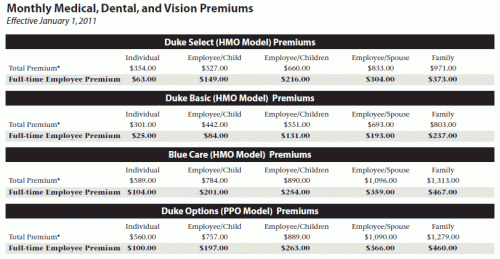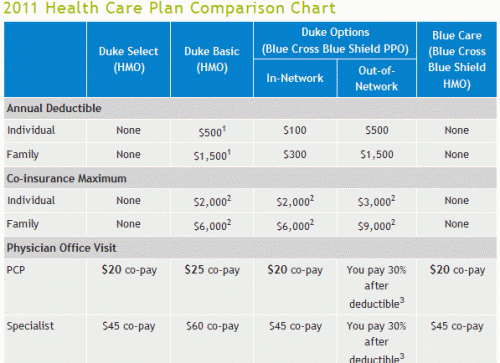Austin linked to a story last week by Sarah Kliff about hospital-insurer integration in Massachusetts, where a hospital chain is offering an insurance product in conjunction with an insurer that compels the insured to use only chained-owned hospitals. Sarah surmised the goal was to reduce premiums by limiting choice, but Austin was unsure and noted potential alternative motivations.
- To control referrals, capturing a larger share of patients than it would otherwise
- To raise the costs of other insurers by charging them more than the integrated product for access to the hospital chain
- To offer a more price-competitive product by cutting out the administrative costs of hospital-insurer negotiation and streamlining coordination
- To avoid the challenging negotiations with other large and powerful insurers (like Blue Cross/Blue Shield)
Several folks were tweeting about this asking for examples of hospital/health system-insurance integration, and I think Duke University’s employee health plan offerings are a type of hybrid integration. The 2011 options with major medical premiums are shown below (vision and dental not shown).
Duke Select (HMO) and Duke Basic (HMO) could be seen as health system-insurance integration because they are self-insured plans that constrain your choice of physician and hospital (Duke providers, and either Duke University Medical Center or an affiliated hospital). Blue Care (HMO) is a Blue Cross/Blue Shield NC plan that provides a more expansive choice of physicians and hospitals that includes Duke providers, but offers other choices. Most notably, it allows persons to seek health care from UNC health care (hospital is 8 miles down the road; but Duke and UNC practices are often on opposing street corners in Wake, Durham and Orange Counties). The Duke Options PPO model is a plan that includes coverage nationally and internationally and is typically chosen by employees who live overseas/travel a great deal in their jobs.
There are some other differences between the plans as highlighted in the table below, namely co-pays for office visits and annual deductible.
To simplify, let us compare the family premiums of two of the options: The Duke Select plan (integrated self insured option) that has a more constrained choice of provider as compared to the Blue Care network organized by BCBS NC. The two plans have identical co-pays for physician visits, have no annual deductible and no co-insurance annual maximum.
- Duke Select, integrated product with less choice: $373/month employee premium ($971/month total premium)
- Blue Care (BCBS NC), more choice: $467/month employee premium ($1,313/month total premium)
Duke Select and Blue Care have the same cost share structure, different premiums, and appear to otherwise differ only by the choice of provider. The more limited choice plan has a lower employee premium, ($94/month less), but the total premium is $342/month lower. This means that Duke is paying around $250/month more to provide an insurance option (Blue Care) to its employees that allows them to get health care from other than Duke. If all the total premium differences was the responsibility of the employee, that might support choice of provider as the full story, but that is not the case. Something else must be going on.
I do not think this is related to lifetime maximums, but am looking into that. Of the motivations listed by Austin above, I think #1 (control referrals) is a likely motivation with a similar hospital (UNC) so close. A modification of motivations #2 and #3 above is also plausible, with two possibilities. The first is that Duke is tolerating paying a higher premium than they can produce internally via self insuring to establish that premium (and the unobserved insurer to Duke payments) necessary to buy access to health care at Duke. On the other hand, BCBS NC could be saying this is what we charge other employers for access to this set of network choices and BCBS knows that Duke cannot get away with only offering Duke care options to their employees, so they must pay the higher premium. I am not sure who has the most power here. I am going to stop here and see if anyone has other ideas, but it seems like something other than, or at least in addition to a choice/premium tradeoff is going on here.



